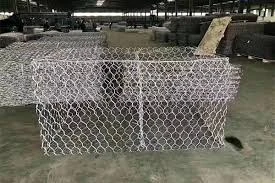-
 Phone:
Phone: -
 Email:
Email:

Understanding Baling Wire Gauge for Effective Agricultural and Industrial Applications
Understanding Baling Wire Gauge A Comprehensive Guide
Baling wire is an essential component in various industries, particularly in agriculture, recycling, and manufacturing. It is primarily utilized for bundling materials together, ensuring they remain compact and manageable for storage or transport. One critical aspect of baling wire is its gauge, which refers to the thickness of the wire. Understanding baling wire gauge is vital for selecting the appropriate wire for specific applications, maximizing efficiency, and ensuring safety.
What is Wire Gauge?
Wire gauge is a measurement used to determine the diameter of the wire. The American Wire Gauge (AWG) system is the most commonly used standard in the United States. In this system, a smaller gauge number indicates a thicker wire, while a larger number denotes a thinner wire. For example, a 12-gauge wire is thicker than a 16-gauge wire. This measurement impacts the wire's strength, weight capacity, and flexibility, making it crucial for determining the suitable wire for baling operations.
Importance of Choosing the Right Gauge
The selection of the correct baling wire gauge is crucial for several reasons
1. Strength and Durability Thicker wire can handle heavier loads without breaking or deforming. When baling heavier materials, such as scrap metal or large bales of hay, a thicker gauge wire is necessary to ensure the integrity of the bundle.
2. Cost Efficiency Using the appropriate wire gauge helps in reducing costs. Thicker wires can be more expensive, so using a wire that is too thick for the job can lead to unnecessary expenditure. Conversely, using a wire that is too thin may result in breakage, leading to rework and additional costs.
3. Safety In any industrial setting, safety is paramount. A wire that cannot support the weight of its load poses safety risks. Utilizing the correct gauge ensures that materials are securely bundled, minimizing the risk of accidents during handling and transportation.
4. Compatibility with Equipment Different baling machines accommodate different wire gauges. Using the wrong gauge can lead to malfunction or damage to the baling equipment. It is essential to consult the equipment specifications when selecting baling wire.
Common Wire Gauges Used in Baling
In the baling industry, wire gauges typically range from 10 to 16 AWG
.baling wire gauge

- 10 Gauge This is one of the thickest options available and is ideal for heavy-duty applications. It is commonly used for baling tough materials like scrap metal and industrial waste.
- 12 Gauge A popular choice for general-purpose baling. It offers a good balance of strength and flexibility, making it suitable for various materials, including cardboard and plastic.
- 14 Gauge This wire is often used for lighter bales and is popular in agricultural settings for bundling hay and straw.
- 16 Gauge The thinnest commonly used baling wire gauge, it is appropriate for lightweight applications and small bales. While it is cost-effective, care must be taken for not overloading.
Tips for Choosing the Right Gauge
1. Assess the Material Understand the weight and type of materials you will be baling. This insight will guide you in selecting the appropriate gauge.
2. Consult Manufacturer Guidelines Always refer to the manufacturer's specifications for the baling equipment you are using. This can help you avoid compatibility issues.
3. Consider Environmental Factors If your bales will be stored outdoors or in harsh conditions, consider using a thicker gauge for added durability and resistance to environmental stressors.
4. Trial and Error If unsure, start with a medium gauge and assess its performance. Adjustments can be made based on your observations during the baling process.
Conclusion
Choosing the right baling wire gauge is a critical decision that can significantly impact the efficiency, costs, and safety of your operations. By understanding the importance of wire gauge and considering the specific needs of your materials and equipment, you can make informed choices that enhance your baling processes. Whether for agriculture, recycling, or manufacturing, selecting the appropriate baling wire gauge will ensure the integrity of your bundled materials while optimizing performance and maintaining safety standards.
-
Wire Mesh for Every Need: A Practical SolutionNewsJul.25,2025
-
Steel Fences: Durable, Secure, and Stylish OptionsNewsJul.25,2025
-
Roll Top Fencing: A Smart Solution for Safety and SecurityNewsJul.25,2025
-
Cattle Farm Fencing Solutions for Maximum SecurityNewsJul.25,2025
-
Affordable Iron Binding Wire SolutionsNewsJul.25,2025
-
Affordable Galvanized Wire SolutionsNewsJul.25,2025
-
Wire Hanger Recycling IdeasNewsJul.25,2025








